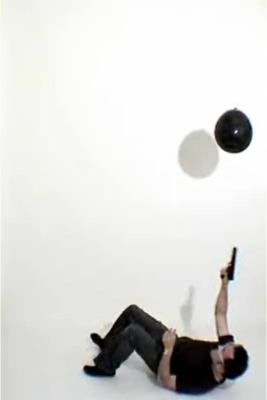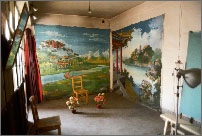I haven't read or thought about this poem by Gwendolyn Brooks since high school but for reasons unexplained it has been running through my head all day:
THE POOL PLAYERS.
SEVEN AT THE GOLDEN SHOVEL.
We real cool. We
Left school. We
Lurk late. We
Strike straight. We
Sing sin. We
Thin gin. We
Jazz June. We
Die soon.
-Gwendolyn Brooks
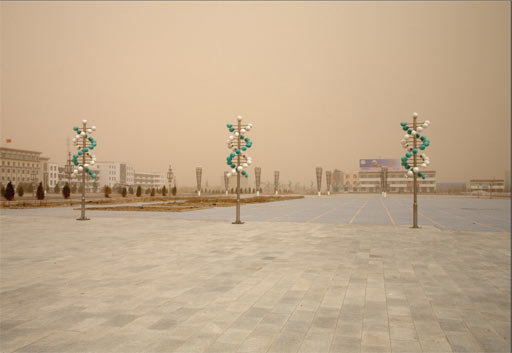 Benoit Aquin's series titled "The Chinese Dust Bowl" is a sobering look at the consequences of over-exploitation of fragile environments. Be sure to also read the associated magazine article in the Canadian [pdf] Walrus Magazine. Today's NYTimes has a story about something similar happening in Spain. (via the always superb BLDG BLOG)
Benoit Aquin's series titled "The Chinese Dust Bowl" is a sobering look at the consequences of over-exploitation of fragile environments. Be sure to also read the associated magazine article in the Canadian [pdf] Walrus Magazine. Today's NYTimes has a story about something similar happening in Spain. (via the always superb BLDG BLOG)
For all the art photography I look at some of the pictures that compel me the most are taken by robots. This view taken yesterday by the Phoenix Lander of of what is almost surely ice on Mars sent my little geek heart aflutter:
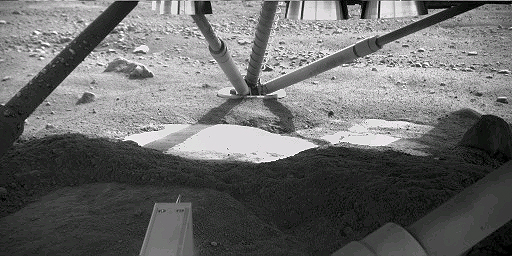
And since we are on the subject of Mars here are two other favorite images: below is the much reproduced sunset over Gusev crater (Spirit Rover):
and
A view into a deep pit crater on the side of a volcano taken by the Mars Reconnaissance Orbiter:
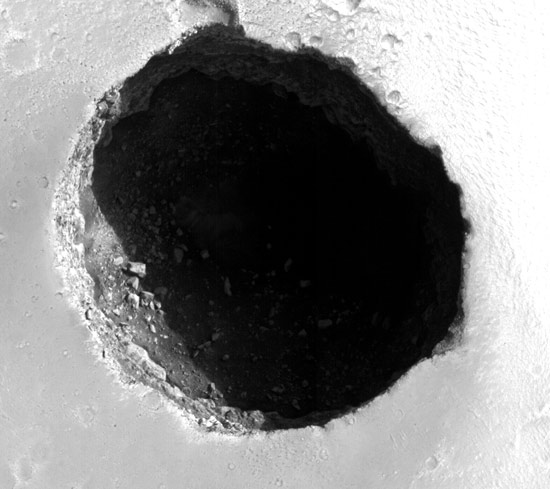
Somewhere in storage I have a big book of Mars images (including 3D images) produced by the Viking Landers which I picked up with grass cutting money after a visit to Nasa when I was around 12. The pictures might look fairly primitive compared to the ones coming through now, but there were very few single books that had a greater impact on my adolescence.
More adolescent geekery: ASCII Days
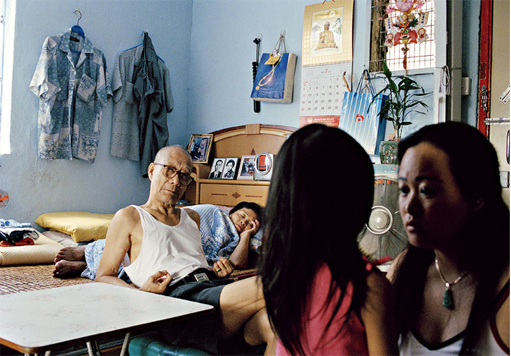
I don't buy into the whole idea of universality — the popular "it's a small world after all" belief that if you scratch the surface a bit we're all just plain folk who are the same underneath. Our culture, our families and our unique quirks mold our worlds and define the physics around which our lives revolve often blinding us to other worlds that exist beside us. I enjoy the work of artists who expose the intersections and rifts between worlds allowing us to peek into the unknowable territory that marks the boundaries of other people's lives. This is what Thomas Holton's The Lams of Ludlow Street does for me.
I think I'm going to make the reader question thing a regular feature so here's another one by a reader named Daniel, a NY transplant from Wisconsin, who I met at the recent photo festival in DUMBO: "One thing still bothers me about our conversation. You said you make contact sheets. Were you talking about old fashioned contact sheets or digital ones? Isn't it easer to just do view them on the computer?"
I do scan most of my 35mm film and I manage the files in Aperture but for project related photography I always make physical contact sheets (sometimes I now print them from the digital files because having them made traditionally is so darned expensive).
Why waste the paper when we can see everything bigger and better on screen? Mainly because I like to see the boundaries of the roll of film contained on sheet of paper. I rarely shoot more than one or two rolls of film in a day so a contact sheet represents a definable moment. Those edges of those days get lost on screen and make editing more difficult. I edit all my medium format film as contact sheets out of necessity as I don't own a decent medium format film scanner.
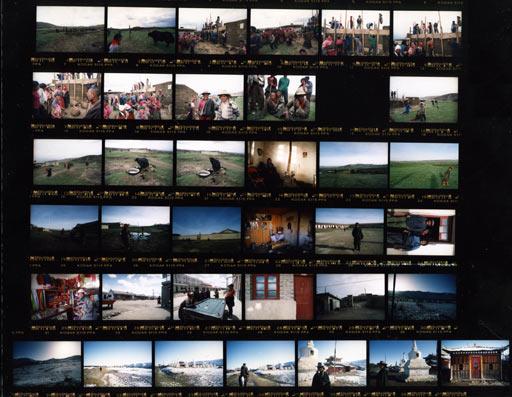 a large version of the contact sheet
a large version of the contact sheet
Above is a contact sheet from Amdo. Most of my film had been ruined by being frozen so I was shooting parsimoniously. In the first couple of frames you can see I wandered off the road to check out a house-raising. I ended up staying in this village for a few days. The roll of film covers a day and a half.
You can download a large version of the contact sheet here if you want to check it out in more detail.
These are some of the resulting images: Number 10, Number 16, Number 18, Number 19, Number 25.
Got a question? Feel free to ask just email my first name at mexicanpictures.com
My dad was served as a doctor in the war we call the Vietnam war, the war the Vietnamese call The American War. He was there from 1966 to 1967. My dad's Kodachromes—there are hundreds of them—were my first sense of 'the other side of the world'. Many photos are of empty landscapes. There are shots taken from the backs of jeeps. The barracks. A whole roll is devoted to a praying mantis that lived in his dorm.
There are many shots of red dirt roads and palm trees. The palms and the red dirt must have made some deep psychic impression because during my trips there as a backpacker, my first impression was of a kind of overpowering and almost haunting dejavu. His photos largely turned away from the horrors he experienced. In the year he served more than 6,000 Americans died. 12,000 South Vietnamese died and 61,000 North Vietnamese. More than 30,000 were wounded. The hospital where he worked was one of the busiest in the country. When I was growing up we would sometimes talk about that year during long Texas car rides, but his answers to my questions always seemed like riddles to me. They still do.
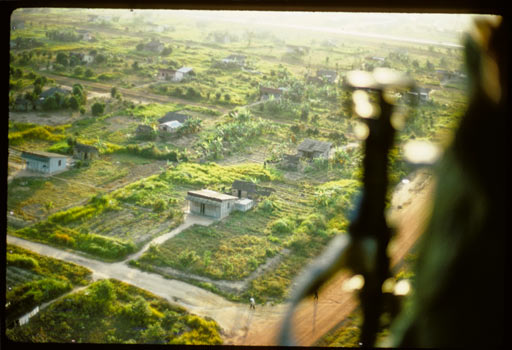
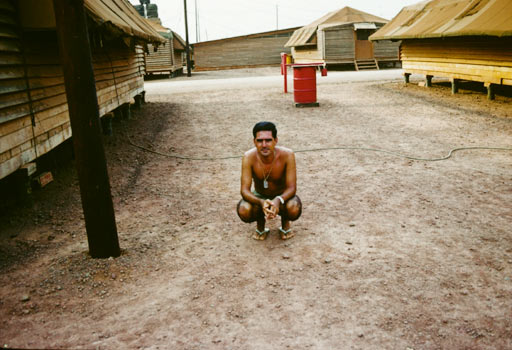
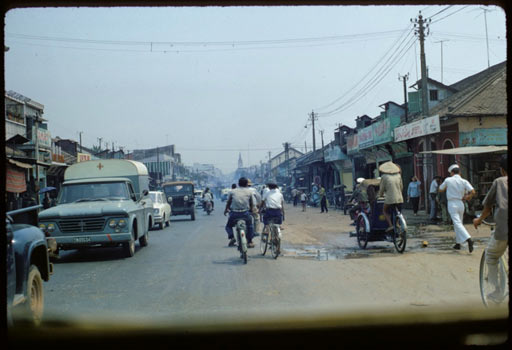
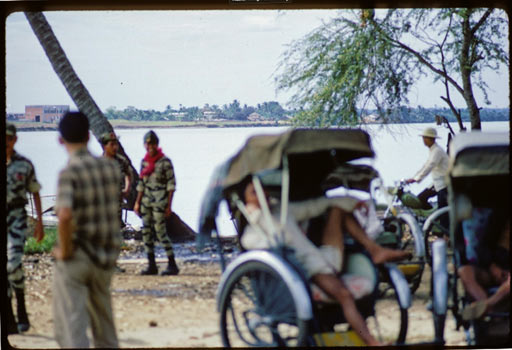
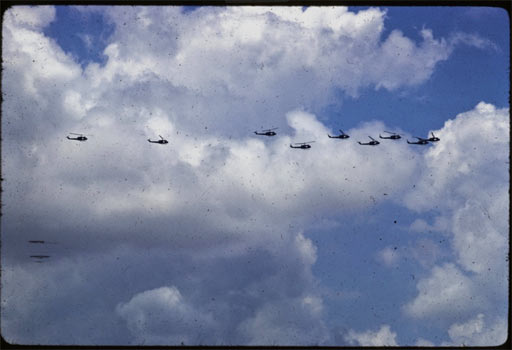
Continue reading "My Dad's Vietnam 1966" →
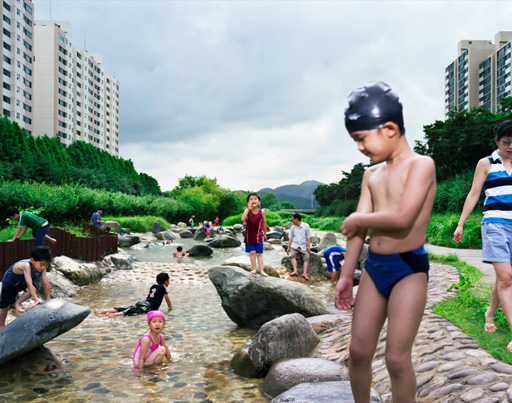 Seyeon Yun is a Yale MFA student with several knockout projects. Incomplete Journey is a astute wander through Korea... The portfolio is split into three chapters and, as the title suggests, it feels that more chapters are on the way. Homecoming is an equally powerful project delving into the lives of war veterans. Yun is part of the Yale MFA group show at Danzinger Projects opening on May 27th.
Seyeon Yun is a Yale MFA student with several knockout projects. Incomplete Journey is a astute wander through Korea... The portfolio is split into three chapters and, as the title suggests, it feels that more chapters are on the way. Homecoming is an equally powerful project delving into the lives of war veterans. Yun is part of the Yale MFA group show at Danzinger Projects opening on May 27th.
I want a book about all the trees.
And can you find me a book about volcanos?
And leaves. I like books with all the kinds of leaves.
Don't forget shark books. Tiger sharks and hammer heads and sharks with teeth that eat other sharks.
And volcanos! You never get me volcano books.
Also one about salad.
Daddy does it cost a lota money to get a book about train stations?
I want a book with the blue fish and one with brown fish and one with silver fish.
And a book about chimneys! And peacocks! And armadillos!
Do you have a book about the third rail?
Can you get me all these books?
I want one book about streetsweepers and.. and.. and... a concertina wire book!
And maybe one about giants with lotsa lotsa pictures. Three giants!
I will find books about rodeos.
Can we organize my books so we can see the spine?
Daddy do you love books too?
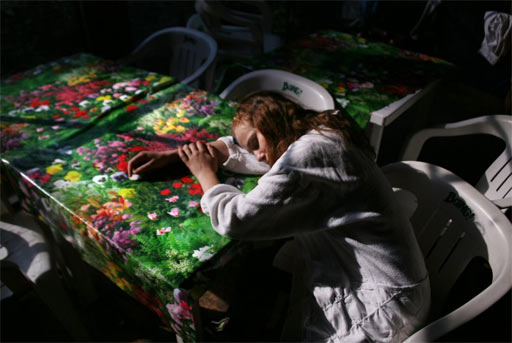
Mark Powell is a prolific maker of compelling enigmatic images. If you hang out with Mark for any time you realize his world follows him around. Strange things happen. He has kind of a force field that creates mystery.
I hadn't checked in on his website for a while and found that it is full of new work.
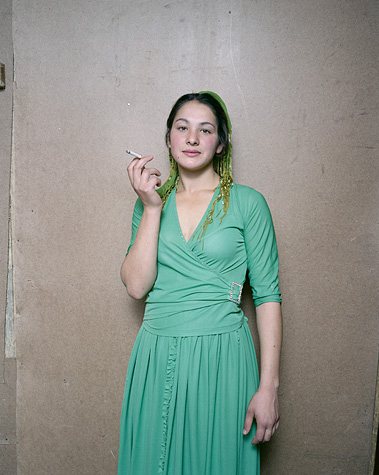
If you happen to be at the New York Photo Festival be sure to check out Andrew Miksys' show called BAXT, an exploration of the Gypsy community of Lithuania. The exhibition coincides with the release of a book of the same title. Baxt is the Roma word for Fate. Many of the images on the web don't do the prints justice. For example one of the signature pieces of the show is a portrait of a crying bride. On the web you can't see that she is crying which mutes the impact of the image. The show is on display at the Nelson Hancock Gallery through July 5th.
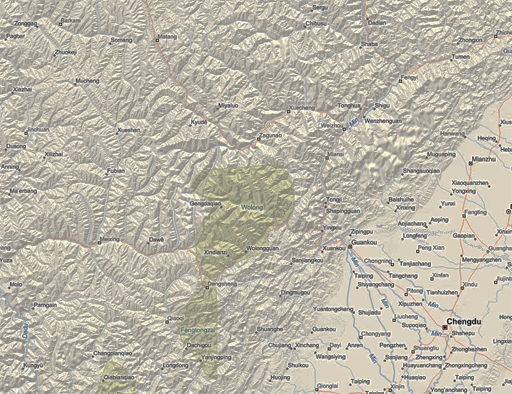
The city of Wenchuan where the recent earthquake in China was centered lies only a few miles away from the Longmenshan fault. The fault severs Sichuan province on the diagonal cutting it roughly in half. From ground the land to the east of the fault appears flat, but if you fly above it, you will see the earth slopes down into a huge basin (geologists call this the Sichuan Basin). On the other side of the fault, to the west, the land immediately deforms and flatlands quickly become foothills and foothills abruptly become an imposing labyrinth of impossibly high mountains and deep river valleys.
Until about 40 years ago the city of Wenchuan was one of the last major Chinese outposts before getting into the serious mountains. It’s lies at 4347 feet above sea level. Respectable, but a drive up the road you start hitting passes that are at 15,000 feet, then 17,000 feet...a day up the road you hit a 19,000 foot pass and those are the passes, the low spots between the mountains. The landscape is beyond human scale. For hundreds of years this was were where China effectively ended. Beyond were various kingdoms and fiefdoms of tribal peoples such as the Miao, the Naxi, the Qiang, the Yi, the Lisu and the many tribes of people we now group under the title Tibetans. Chinese mythology is full of stories of the mountains being the home to demons and spirits and in many old Chinese maps these mountains and the imposing deserts to the north of them represent the ends of the earth. The people in the mountains spoke foreign languages, practiced a foreign religion, and were ethnically distinct from the Chinese.
Mao Zedong made a conscious decision to take control of Sichuan's mountains, as well as Tibet’s 3 primary kingdoms. This area represented to him, and to the majority of Chinese today, part of that country's manifest destiny. Mao's government sent tens of thousands of Chinese up into the highlands as part of an organized "education and cultural assimilation" campaign both to teach city people the value of manual labor and to bring Chinese culture to the region. Local culture was systematically destroyed, monasteries were blown up, local religion and language were banned, and small villages were turned into Chinese cities. Living standards for many improved, but at the cost of their cultural heritage. Instead of small self sustaining organic communities living in symbiosis with the land the Chinese built medium sized cities often on grids, they dammed the rivers and relied almost exclusively on imports from hundreds of miles away to feed and cloth the people of those cities. Today there is hardly a city in the region without a majority Chinese population and in most cities vernacular architecture and customs are rapidly being erased.
As the land in these areas is so steep and harsh, most cities lie in deep river valleys. Because flat land is at a premium cities are often spread out over the thin strip of land on both sides of river bottoms. There are hundreds of rivers as this is China’s watershed and up every river and tributary you will often find a town or two. For the most part, dams have tamed these rivers providing power and most cities are connected by roads to the outside world. But these are tenuous connections. Most cities often only have a single road that passes through and connections to other cities and the outside world have to pass through some of the most rugged landscape in the world. Still, bit by bit, the Chinese have tried to take control of the landscape. Twenty years ago a bus ride to Wenchuan from the mega-city of Chengdu was a 14 hour ordeal. Today there are major highways with many tunnels cutting through mountains and the trip only takes about 3 hours or at least it did before the earthquake struck.
Beyond Wenchuan the mountain roads get narrower and even in the best of times have to be cleared regularly of debris from almost daily rockslides and washouts. Virtually all of western Sichuan as well as the provinces further north and west were recently closed due to riots. The riots in which ethnic Tibetans revolted against Chinese authorities and Chinese setters were the result of years marginalization, a kind of soft apartheid in which non-Chinese speaking locals are inexorably losing control of their historical homeland. The protests (and the crackdown in response) have been going on for months now in an area twice the size of Texas which has been almost completely cut off from reporters and travelers (Nicholas Kristoff managed to get in a rare report from the region in today’s NY TImes) The largest roads into this area run through Sichuan and right now apparently those roads are closed which makes the isolation even more complete. In addition to destroying roads homes and schools, the earthquake damaged hundreds of tunnels, bridges, and dams.
Looking at the images coming out of China I’m of course horrified by the destruction and loss of life wrought by the earthquake, in fact I worry that the actual death toll is much much higher than officially reported. The mountains are full of small towns and in village after village local Chinese governments have had habit of bulldozing indigenous architecture and erecting Chinese style concrete apartment buildings. While sometimes the buildings will have a locally inspired fillip as a nod to the tourists they tend to essentially be cheap concrete boxes, constructed fast and dirty. Judging from the pictures of the disaster it is these structures which have failed so dramatically turning entire cities into rubble. Many of those cities will be totally cut of for some time. Traditional villages in this area were even 15 years ago much smaller, one story affairs often built of wood and less susceptible to catastrophe than concrete apartment blocks perched on steep mountain ledges and at the bottom of deep river canyons.
My suspicion and fear is that the government will use the the world’s sympathy for the quake victims and rightful admiration for the heroics of the People’s Liberation Army whose soldiers working under the worst of conditions to detract from the harsh crackdown on Tibetans in the region. I suspect it will take years to find out what has really happened inland from to epicenter to tribal communities devastated by this this quake. My hope is that the quake will give the government in Beijing pause about overdevelopment in a region so inherently fragile where life has always been tenuous. Perhaps they will even take lessons from the indigenous people who have managed to live in harmony with this harsh environment for centuries rather than taking on the Sisyphean task of rebuilding and controlling the uncontrollable.
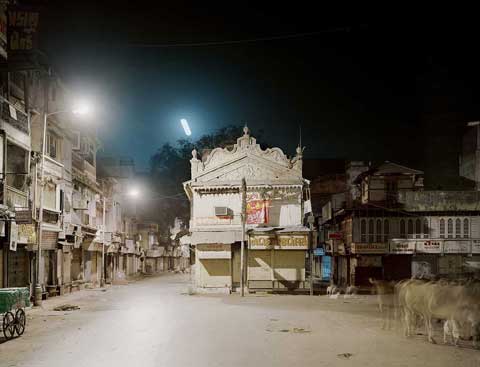
Sometimes all it takes is a slight shift in perspective to make an ordinary photograph extraordinary.
If you have ever been to Ahmedabad in India you know it's characterized by it's crazy chaotic street life. It's a dense warren of a city, home to 5.6 million people, that has been around since the 11th century, so to see it empty is something. Frederic Delangle made a series of photos of Ahmedabad at night which exposes the city beyond the people. (via one of my favorite photography blogs, Hippolyte Bard)
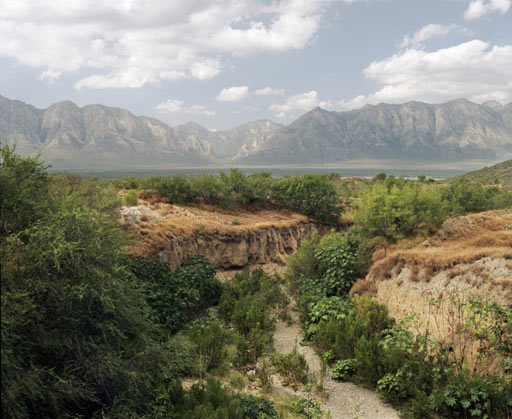
I received a nice email the other day from Alejandro Cartagena, a Dominican born photographer, who has lived for many years in the city of my birth, and the city closest to my heart, Monterrey, Mexico. Cartagena was a researcher on one of my semi-obsessions, a book titled Nuevo Leon, Imagenes de Nuestra Memoria and he is also responsible for a photo project I've been meaning to post titled Lost Rivers . If you've spent much time in that part of the world you know the significance of the often empty river beds that lead off into nowhere. In fact Monterrey itself is split in half by a lost river, the Santa Catarina, that is a chaotic mix of sand, overgrown palms, squatter homes, markets, and soccer fields. But you don't have to have experience in Mexico's northern states, to appreciate the melancholy of photographs of rivers vanishing into the dust; some photographs speak for themselves.
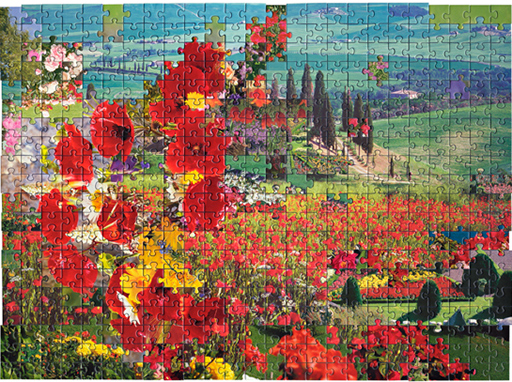
Over at 20x200 we're introducing a piece by Kent Rogowski today in conjunction with the opening of his show Love = Love tonight at the Jen Bekman gallery.
In this project Rogowski makes montages from puzzles with landscape scenes. The results would make the Cubists proud. I think they're great.
Check out many more fun projects on the artist's website.
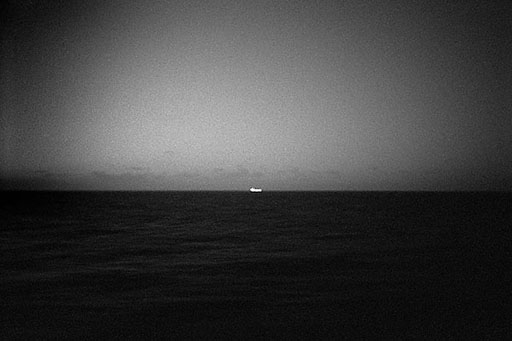
Have you ever stood on a beach and looked out over the water to some distant boat on the horizon and wondered about the people out there? I have, which is why I enjoy Mårten Lange's project The Sea so much. The little boats give scale to the sea's vastness, humanize the incomprehensible, and provide a space for your mind to fill with a story.
Lange is an editor at Farewell Books which specializes in delightful (but cheaply constructed) photo books.

raul andres: I am Pirate Raul. This is my treasure chest. We will bury it.
me: What's in that treasure chest?
Pirate Raul: GOLD! SILVER!
me: anything else?
Pirate Raul: and... and...bones! and coins! and... peg legs!
me: and?
Pirate Raul: rocks and shells and... chocolate!
me: and?
Pirate Raul: and... and... Cucumbers! Lots and lots of cucumbers!
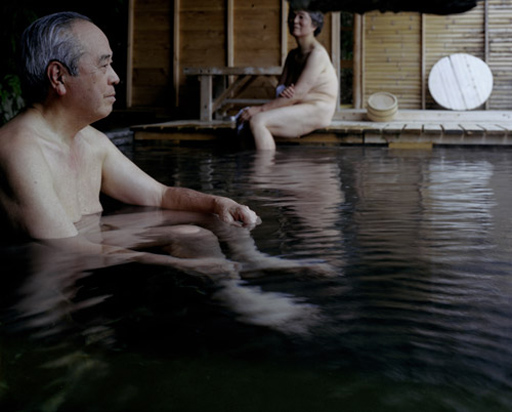
The American tendency is to associate any display of skin with sex and because of this I imagine many here would have a hard time wrapping their minds around the traditional Japanese sentos (public baths) and onsens (hot springs) you find all over Japan. In the most traditional village sentos families, neighbors, and co-workers bathe together, male/female, young/old with everyone gloriously and unabashedly naked. During my visits to Japan I was sometimes invited to join friends for baths after work and was always struck by the family atmosphere in these places—everyone with their little washcloths resting on their heads washing, gossiping, and just enjoying the warm soak.
Hiroyo Kaneko's series titled Sentimental Education gives us a bit of the feel of these places. When I compare these nude figures to the contrived "we're all so so naked and we don't care!' figures in Ryan McGinley's recent work I'm reminded that often the best way to showcase someone's humanity is by catching them in the middle of their most ordinary daily rituals.
Related: Sento at 6th and Main by Gail Dubrow.
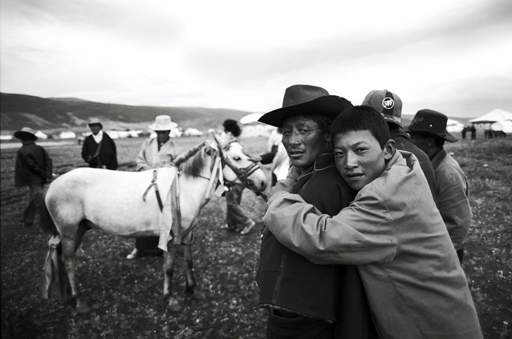
A blog reader named Stella wrote in asking about the story behind the picture above. I always like hearing the stories behind other people's images so I don't mind telling the stories behind mine. If you have a question about a particular picture, just email and I'll answer when I have a chance.
This photo was taken two years ago durning a Tibetan festival where herdsmen gather to celebrate and do business—literally to horse trade. The white horse was up for sale and it was initially the horse that drew me (I have a thing for pictures of white horses). So I was walked over and was enjoying the the back and forth discussion when the owner of the horse came over to check me out. We traded hellos and he obviously found me amusing. He asked if i was married or single. I said married. He asked me if I had children. I said I had one. He asked if it was a boy or a girl. I said a boy. He smiled and putting his fingers to his mouth, whistled loudly. "My son" he gestured. His son came over and gave him a big hug and I took this shot. Then I took a polaroid and gave it to them as thanks. The polaroids drew a crowd and I only had a few pieces of polaroid film left so I quickly exited. For the rest of the week I would be wandering around when I would hear the distinctive whistle, then I would look around and see the man in the distance. He would tip his hat to me and I would tip my hat back to him.
That's the story.
The print is available through my gallery in several editions as both as a traditional print and a platinum print.
Sometimes, on days like today, I will walk out past the creek along the rabbit trails, through the deep forest where the trees grow in a thick, to the clearing. I alone know the way to the single large rock that sits in the sun. It is as if the trees have stepped back to pay their respects. Climbing up top I close my eyes and and wander. I imagine the people who must have stopped and rested here through the ages. I imagine pre-cambrian oceans and I imagine the luminescent monsters that still hide in the depths. I imagine a couple touching fingers for the first time. I imagine births and deaths and all the things in-between. And when the world seems so full it will burst, almost always I will notice that I am not alone on my rock.
If I am quiet the clearing will come alive again full of buzzing things, hungry rabbits and the occasional snake. Deer munch on the blackberries that grow in the brambles on the forest’s edge and if I stay long enough fireflies appear telling me it is time to go home. While lure of seeing stars over the black silhouette of the forest against the fading blue of the sky is strong, I know if I stay too long, if it gets too dark I will be hopelessly lost and it would be better to sleep on that rock than it would be to venture into the maze of the forest in the blackness, so I run. I run from the cold of the night, from the unknown things in the dark, from everything, until I see the light of home. Then, when I am safe in bed, I will close my eyes and go back to my clearing revisiting the places I am already forgetting.
If you subscribe to the photography blogs in the sidebar you've probably seen William Lamson's site mentioned recently (he's recently updated to include several new projects). His work is being discussed because so many of his projects are intensely visual/amusing/thought provoking. I especially love the series titled Intervention.
William is a semi-neighbor of mine and I often see him puttering around the neighborhood doing normal everyday things which is odd after seeing his work because you imagine him going home to a room full of black balloons and guns or an all white lab full of trampolines and people in white hazmat suits. Don't know what I'm talking about? Time to click over to his site.
A child's foot doesn't know it's a foot yet
And it wants to be a butterfly or an apple
But then the rocks and pieces of glass,
the streets, the stairways
and the roads of hard earth
keep teaching the foot that it can't fly,
that it can't be a round fruit on a branch.
Then the child's foot
was defeated, it fell
in battle,
it was a prisoner,
condemned to life in a shoe.
Little by little without light
it got acquainted with the world in its own way
without knowing the other imprisoned foot
exploring life like a blind man.
Those smooth toe nails
of quartz in a bunch,
got harder, they changed into
an opaque substance, into hard horn
and the child's little petals
were crushed, lost their balance,
took the form of a reptile without eyes,
with triangular heads like a worm's.
And they had callused over,
they were covered
with tiny lava fields of death,
a hardening unasked for.
But this blind thing kept going
without surrender, without stopping
hour after hour.
One foot after another,
now as a man,
or a woman,
above,
below,
through the fields, the mines,
the stores, the government bureaus,
backward,
outside, inside,
forward,
this foot worked with its shoes,
it hardly had time
to be naked in love or in sleep
one foot walked, both feet walked
until the whole man stopped.
And then it went down
into the earth and didn't know anything
because there everything was dark,
it didn't know it was no longer a foot
or if they buried it so it could fly
or so it could
be an apple.
. . . . . . . . . . . . . . . . .
translated by Jodey Bateman (the original after the jump)
Continue reading "Pablo Neruda's To the Foot From Its Child" →
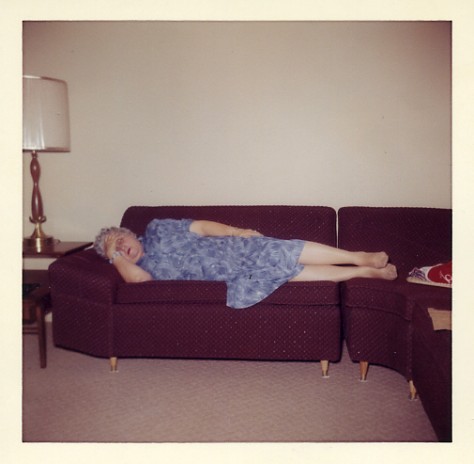
I love taking pictures of people asleep. In sleeping children we see their futures. In adults we see their childhoods. We relax. Our waking masks lowered, we become truer versions of ourselves.
The image above is from the site Square America which collects vernacular photography and has posted a wonderful collection of vintage photos of people sleeping. Check them out.
"The week before, when I'd arrived in Shanghai, my first impression of China had been that it was one of the most advanced places I'd ever seen. The scale of Shanghai, which from the sky had presented a dead-flat vista of tens of thousands of neatly arrayed oblong houses—each of which, a closer look revealed, was in fact a large apartment block—and then, on the ground, the brutally new skyscrapers and the pedestrian-hostile streets and the artificial dusk of the smoke-filled winter sky: it was all thrilling. It was as if the gods of world history had asked, 'Does somebody want to get into some really unprecedentedly deep shit?' and this place had raised its hands and said 'Yeah!'"
-Jonathan Franzen in the April 21, 2008 New Yorker
More on Franzen's trip to China here (audio link).
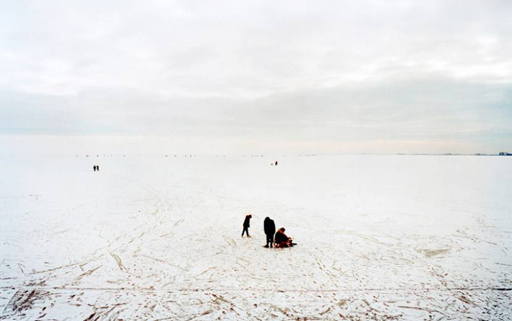
I was lucky to see Raimond Wouda's show School last year at FOAM in Amsterdam, but didn't had a hard time finding the photographer's images online. Happily that has changed and Wouda now has created an eponymous website featuring School and several other projects. The image above is from one titled On Scale. Scale is an important aspect of Wouda's work. He shoots hyper detailed large format images and displays them at wall size. His revamped website only hints at the impact these prints have in person. (The prints are immersive without being monumental and self important.) I hope some smart New York gallerist hooks him up with a show. I'd love to have a chance to commune with the prints again.
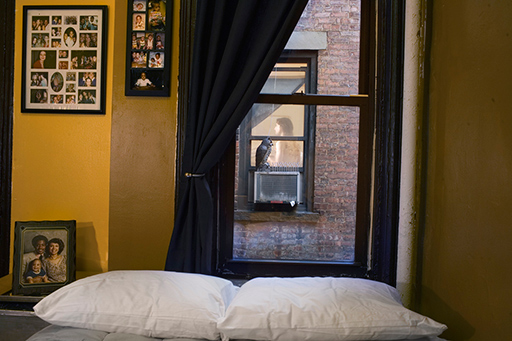
I got to know Gail Albert Halaban's work while hanging around Gabe Greenberg's print studio and came to be a big fan of her highly stylized slightly offkilter peeks into the world of upper crusty New Yorkers.
For her new project titled Out My Window NYC she invites New Yorkers who see their neighbors only through the window and have an interest in connecting with them, to contact her. She states, "I would like to photograph you looking into their place and them looking back at you."
She's posted a few early images from the project and the results are promising. Be sure to click on the images to get a nice large version of the image.
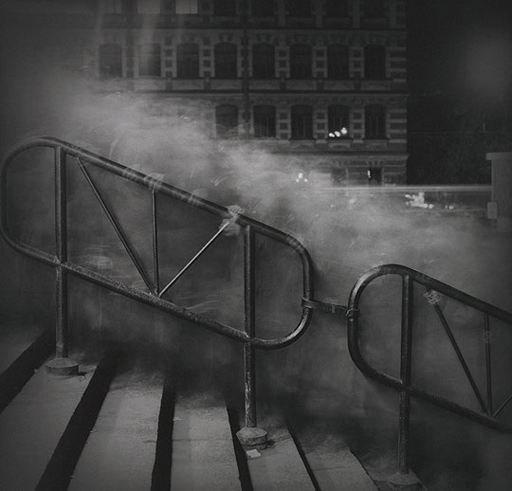
Alexy Titarenko is best known for his long exposures of Russian commuters like the one above. The grim loveliness of that project speaks to both photography's early history and to more recent Soviet reality. ( You can here Titarenko speak about this series on the lens culture website).
Titarenko has a new show at the Nailya Alexander Gallery titled simply Venice. The photos are a nostalgic look at Venice. The images are as pretty as all of his photography is, but I found them to be misleading in the way tourist board postcards are misleading. They hide the ugly overcrowded overtouristed reality of the city today. This seems to be a missed opportunity as Titarenko's technique would have lended itself well to both showing Venice's teeming tourist masses and commenting on the nature of the city itself, instead we get images that evoke an empty romantic Venice that exists primarily as fantasy. This comes off as fluff.
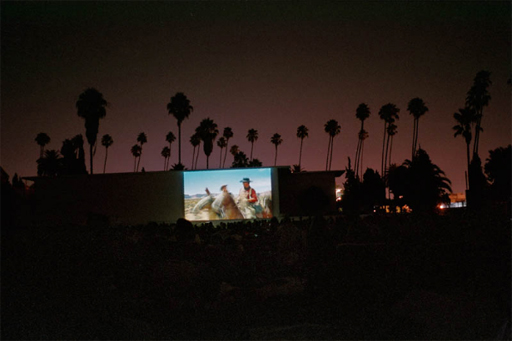
I read something about Raul Corrales the great Cuban photographer and thought it might be fun to do a post about photographers named Raul. But then right away I found the site of a French photographer named Raoul Gatepin who lives in Los Angeles and felt he deserved his own post. His pictures make me miss LA and making photographs there.
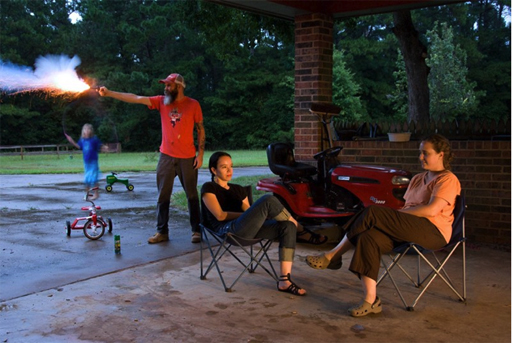
The phrase that came to mind while looking through Christopher Talbot's portfolio titled Transformational Light was "backwoods, Crewdson light". Sounds horrible, but it sort of works, at least for me. Reminds me of East Texas.
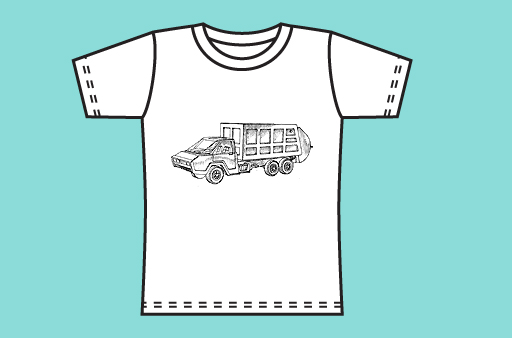
Tomorrow marks the first Brooklyn Flea, which will be the largest flea market in New York.
And if you make it out to Ft. Geene say hello to my wife who will premiering some of the clothes she's created for her new venture 'Two Blue Cars: Shirts for Boys'. She'll feature shirts with diggers, cement mixers, garbage trucks, go carts and the like. The kinds of things little boys obsess over... so say hello.
If going for the flea market isn't your thing, go for the food, many of the regular Red Hook taco trucks (the best in town) will be feeding hungry flea folk.
Liz Kuball the photographer and blogger interviewed me the other day. The results are up on her site. Being interviewed reminded me that I need to get some new photography scanned and online. I have many projects waiting in the wings. Stay tuned...
« Previous 15 Posts
« Previous Post (My 4 Year Old On What Makes a Good Shoe)
2019
:
Jan
.
2016
:
Mar
.
2015
:
Dec
.
2014
:
Oct
.
2013
:
May
.
Apr
.
Mar
.
2012
:
Oct
.
Sep
.
Aug
.
Jul
.
Jun
.
May
.
Mar
.
Feb
.
Jan
.
2011
:
Dec
.
Nov
.
Oct
.
Sep
.
Aug
.
Jul
.
Jun
.
May
.
Apr
.
Mar
.
Feb
.
Jan
.
2010
:
Dec
.
Nov
.
Oct
.
Sep
.
Aug
.
Jul
.
Jun
.
May
.
Apr
.
Mar
.
Feb
.
Jan
.
2009
:
Dec
.
Nov
.
Oct
.
Sep
.
Aug
.
Jul
.
Jun
.
May
.
Apr
.
Mar
.
Feb
.
Jan
.
2008
:
Dec
.
Nov
.
Oct
.
Sep
.
Aug
.
Jul
.
Jun
.
May
.
Apr
.
Mar
.
Feb
.
Jan
.
2007
:
Dec
.
Nov
.
Oct
.
Sep
.
Aug
.
Jul
.
Jun
.
May
.
Apr
.
Mar
.
Feb
.
Jan
.
2006
:
Dec
.
Nov
.
Oct
.
Sep
.
Aug
.
Jul
.
Jun
.
May
.
Apr
.
Mar
.
Feb
.
Jan
.
2005
:
Dec
.
Nov
.
Oct
.
Sep
.
Aug
.
Jul
.
Jun
.
May
.
Apr
.
Mar
.
Feb
.
Jan
.
2004
:
Dec
.
Nov
.
Oct
.
Sep
.
Aug
.
Jul
.
Mar
.
2003
:
Apr
.
1999
:
May
.





















